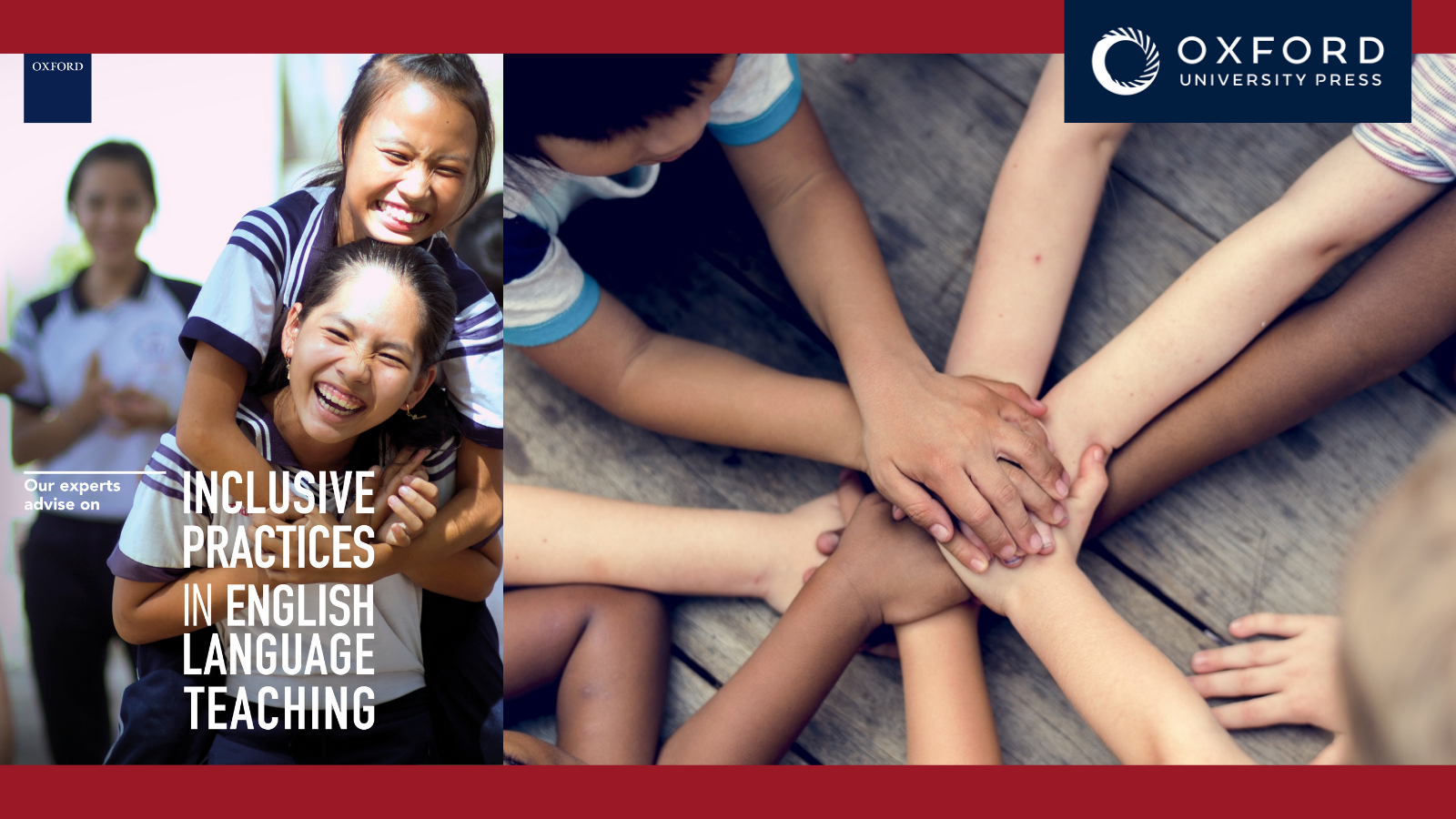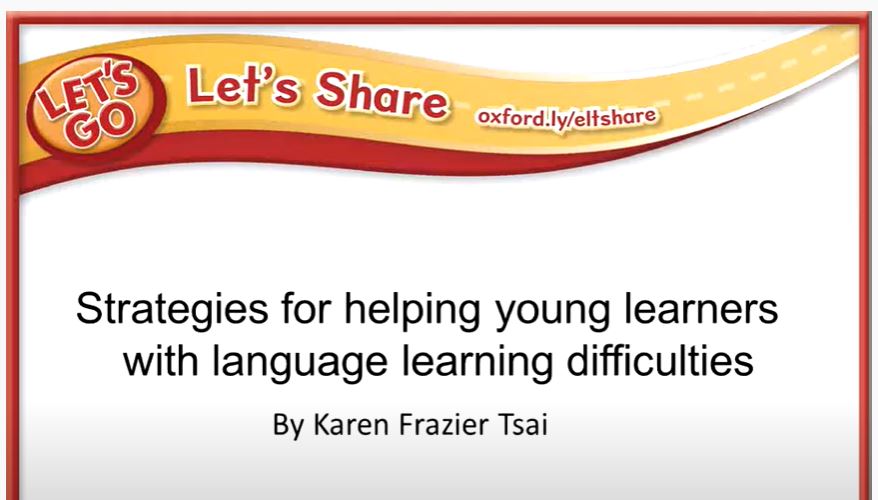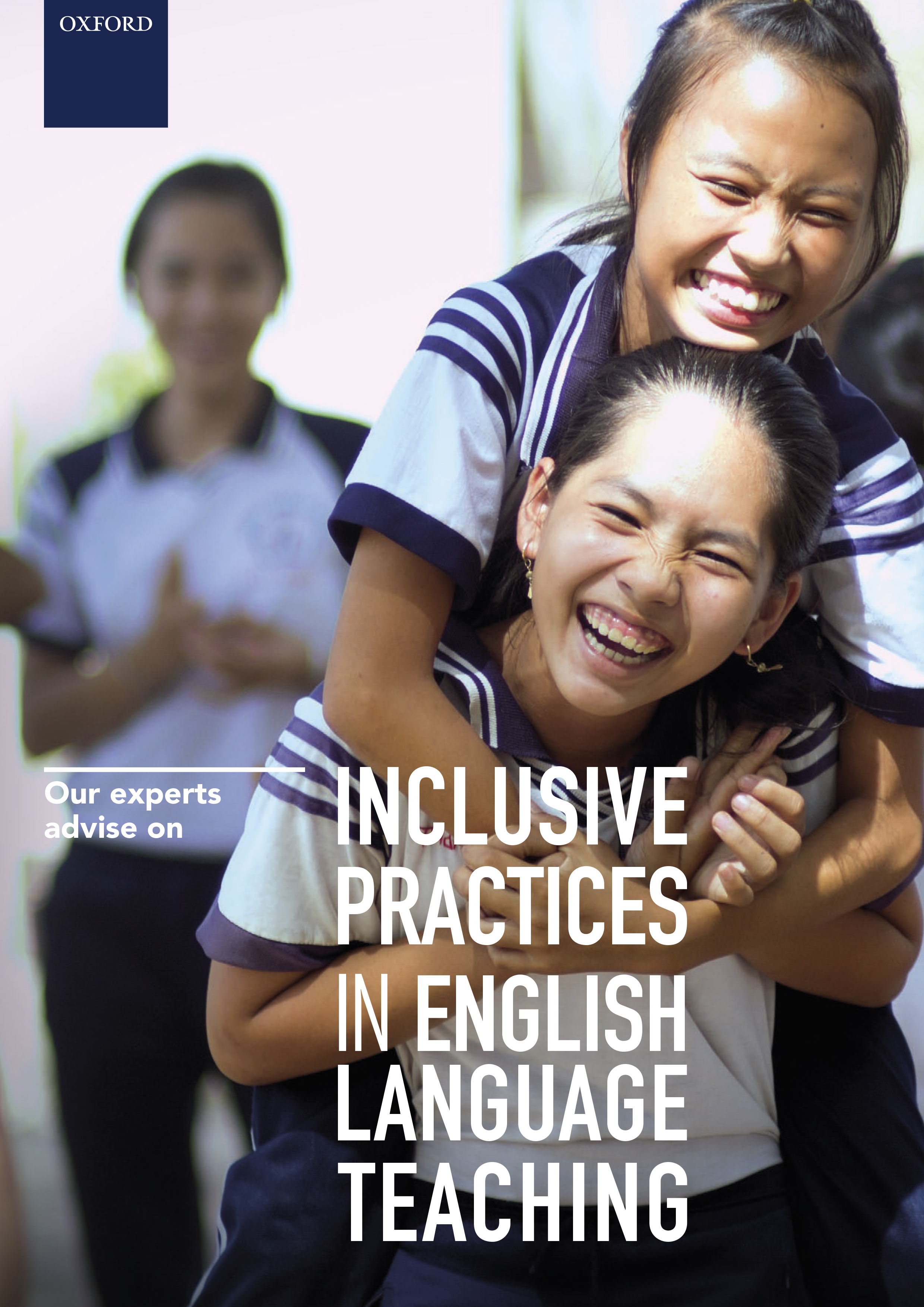
Every ELT teacher has experienced a moment when they wonder what else can be done to help a struggling student. Trying new activities and methods may work, but sometimes the student continues to have problems. This may suggest the student has special educational needs. The student could also be struggling because the language is different from their first language or because of issues related to acculturation.
In either case, what can a teacher do in class to help this student?
1. Get to know your student.
They want to be just like the other students, not thought of as only a student with differences. Find out what the student really likes to do (favourite activities, books, music, games, etc.), and wants to do (at school, outside, dreams, etc.). Then include those likes and wants in the class activities and lesson themes.
2. Find out about your student’s life experience (family, language and school experience).
A student who has had a positive school experience and is confident in their first language (L1) will have better success when learning the second language (L2). They actually rely on knowledge from the first language to help in learning the second language.
If you are teaching young learners in an ESL environment, where everything in the school and the community is in English, you may have students who behave like they have special educational needs. However, we must keep in mind that a student who has just moved to a new community may be experiencing culture shock. This can have a significant effect on how a child deals with learning a new language. Being overwhelmed by sights and sounds that are different can cause the child to withdraw and/or experience ‘response fatigue’. This is the inability to respond because they cannot handle any more new and different stimuli. So it’s important to know more about your student to determine the best way to teach them.
3. Create an atmosphere of acceptance and encouragement where all students feel supported and can learn in different ways.
Every student should feel welcome and valued. To help a student with special educational needs, seat the student near your desk so you can easily give assistance as needed. When individual speaking is necessary, have that student stand near you for support. Also, encourage all your students to get to know each other through in-class activities and projects they do together. Have your students work in small groups and pairs, playing language games, creating stories and role-plays, etc. This is good for students with learning disorders as well as for culturally and linguistically diverse (CLD) students. Working together with a supportive group or partner, that can share ideas, can make a significant difference for these students. Positive pairing helps the student with a difference or disorder feel productive and confident. It minimizes that feeling of being different.
4. Use plenty of visuals in your class.
Teacher and student cards with a picture and written word for vocabulary words are ideal. This is especially important for students who have hearing disabilities. Since they do not hear well, they need to focus on the written words from the beginning. Have students play games in pairs or small groups using small cards, each with a picture and a word to build knowledge in a playful way. Place pictures around your room with words that students can refer to as needed for support.
5. Introduce and practice new language using a multi-sensory/multi-modal approach.
Students with special educational needs, and all students learning a second language, need to have visual, auditory, and kinesthetic input. This multi-modal approach can help the student practice and reinforce the new language in a variety of ways. Dialogues and songs and chants, with repetitive lyrics, that focus on the rhythm of the language are also beneficial. Students with speaking disorders tend to have fewer problems when they are singing or speaking rhythmically (with a chant). Students more easily learn to say new words and language in songs because most of them generally enjoy music and focus on learning the song. Clapping the rhythm also helps both those with speaking as well as hearing disorders.
6. Half-class drills are very useful when practising new language.
If a large group of students are talking together, no one feels as if they stand out. Have half of the class ask the questions and the other half answer. Practising like this, without any student feeling singled out, reduces stress and allows time for students to develop muscle memory and confidence, before having to speak alone. This is especially important for students with special educational needs.
7. Use fun materials, based on students’ likes and experience.
To encourage students who are struggling, find or create short stories about famous people who have overcome disabilities and setbacks. Inspire your students to believe that they can also triumph in spite of the challenges they face. Use magazine pictures of strong and inspiring characters to make popsicle-stick figures. Then place sight words on the figures and have students make sentences with them. Do projects where students create simple stories using their favourite TV or game characters. Always encourage students to share their experiences and viewpoints so that they link their learning to what they already know.
8. Use assistive technology to help provide differentiated learning opportunities for your students.
Digital resources for students often contain stories, which a student can listen to and read over and over, at their own pace. This gives students a chance to practice words and language that they might not be able to completely absorb during the in-class activities. Online practice also provides students with a way to practice listening and new language on their own, in the privacy of their homes.
English Language Learners (ELLs), like the general student population, may have any one of many learning disorders, including visual impairment, hearing impairment, dyslexia or delayed language development. If they face these challenges, it will be evident in both L1 and L2. So it is important for us to carefully understand and evaluate a student’s complete language and life experience when one is struggling with learning English and provide extra support for that student when needed.
As we work with our students, we must also be aware that students who are newcomers to our area, or students who did not choose to be in English classes, go through an adjustment period. During this time, they may actually exhibit behaviours that are similar to those found in a student with special educational needs, such as distractibility, lack of focus and concentration in learning, rejection of and a distance from the new language and community. Given time and plenty of encouraging support from us, and their classmates, students with special needs will be able to learn English.

Watch Karen’s webinar for more tips and strategies that you can use when teaching students with special educational needs.
|
Download our free paper!
|
| Want more free articles, videos and lesson plans from Karen and her Let’s Go co-authors? Click here! |
|
Karen Frazier earned a degree in Speech, with an emphasis on Speech Pathology and has a Masters degree in Linguistics. She has over 30 years of experience working with English language learners in the USA and Taiwan, as an ESL/EFL teacher at various levels. She has also conducted teacher-training workshops in Taiwan, Indonesia, Thailand, Japan, Korea, Mexico and the USA.
Karen is very interested in helping equip all ELT students with the language, confidence and other skills they need to be successful in an English language environment.
She is co-author of Let’s Go, one of the world’s best-selling English courses for children, published by Oxford University Press.



Reblogged this on hungarywolf.
8. Use assistive technology to help provide differentiated learning opportunities for your students.
Use fun materials, based on students’ likes and experience.
[…] Karen Frazier, co-author of Let’s Go, shares her top tips for helping children with learning disorders in the English classroom. Every ELT teacher has experienced a moment when he or she wonders wh… […]
[…] up. Anyone who has spent a few years in the classroom will be able to relate to the opening of her piece by the same title on the OUP ELT […]
These are a lot of great tips for teaching students with special needs. It’s important that they have a safe environment where they can thrive. Thanks for sharing.